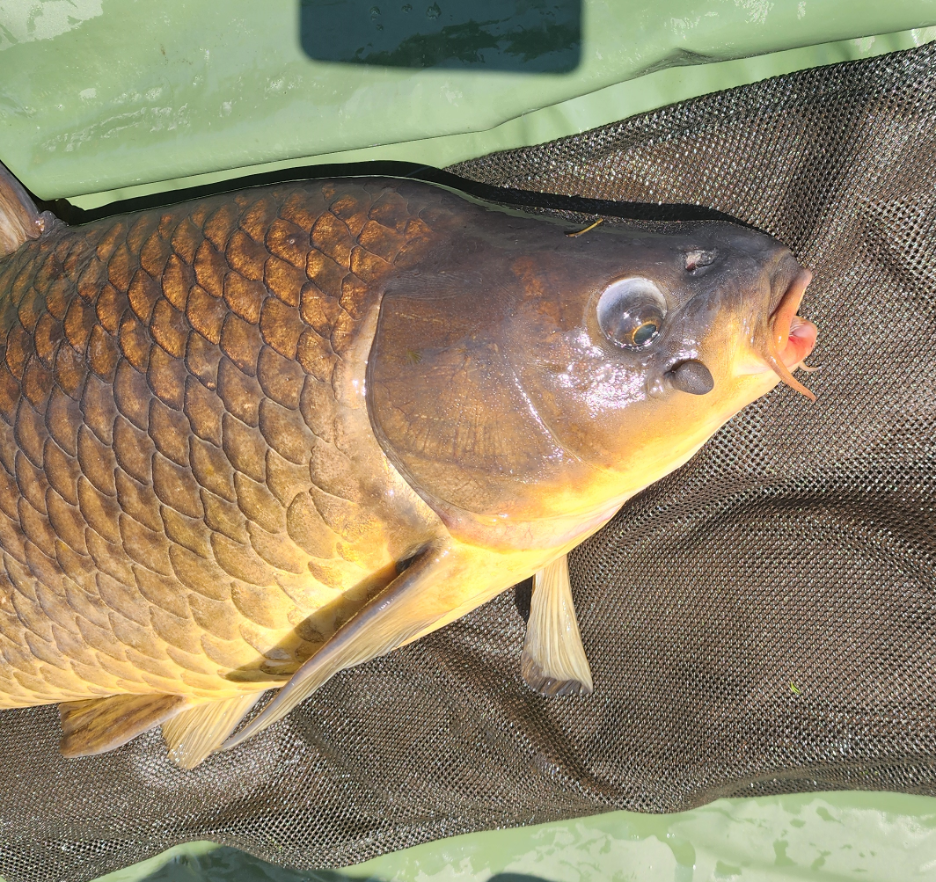Cyprinid Herpesvirus-1: Carp (Koi) Pox

This is carp (koi) pox, also known as cyprinid herpesvirus-1. Carp and koi are the same species, with koi selected for many colour and fin traits. This virus, like many herpesviruses, are carried by fish without clinical signs, until some stressor allows the virus to activate. Think of the herpesvirus that causes chickenpox, which then causes shingles later in life, or the one that causes recurrent cold sores on the lips in people. Usually this virus needs water temperatures below 25C. While sometimes these lesions are more wart-like, they are often flat plaques described as “melted candle wax” like. They may be pigmented like this one or whitish, irregular/lumpy or smooth.
Carp pox generally does not directly harm the fish, although if the stressor affects the immune system the fish they may have other health problems. Carrier fish may also shed the virus without clinical signs being present. Fish may have multiple lesions, or just one. Over time the lesion will usually regress, but in show koi the choice may be made to surgically remove it by a veterinarian for aesthetic reasons or to reduce the risk that a pox will become infected and lead to a systemic bacterial infection. If you keep koi, the disease may spread by infected fish but also buckets, nets, etc used in their care. Fishermen who catch carp can also potentially spread the virus between waterbodies this way. To prevent spreading disease,
- Take your sick fish to a veterinarian who practices aquatic medicine
- Always clean fishing gear
- Report sick or unusual fish if in public waters
- Learn more about preventing the spread of aquatic pathogens and invasive species
Other herpesviruses of carp present in Ontario are cyprinid herpesvirus-3, or koi herpesvirus. This virus typically causes outbreaks in Ontario carp and often many dead carp wash up around spawning season, which is a stressor that allows the virus to activate and cause immunosuppression and other diseases. It is most common when water temperatures are between 18-28C.
Goldfish, a different species from koi/carp, are carriers of cyprinid herpesvirus-2, which is often called goldfish hemopoietic necrosis and may cause high mortality in goldfish <1 year of age in water temperatures between 15-25C.
Any unusual findings in wild fish can be reported on the finfish health tracker app:
https://cwhc.wildlifesubmissions.org/#/finfish-en
Reporting any sick or unusual looking fish, as well as the presence of invasive fish like carp, helps us better understand fish health in Ontario.
Invasive species in Ontario | ontario.ca

